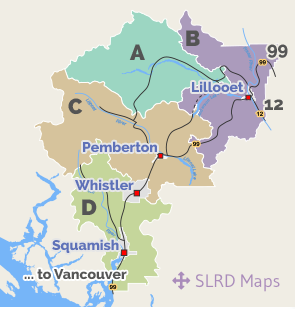The Squamish-Lillooet Regional District is changing its policy around temporary-use permits.
The move is aimed at clarifying what events are appropriate for temporary permits and what ones need to go through a more formal rezoning process.
Board chair Jack Crompton admits this hasn’t been a huge issue but adds the policy is simply to prevent it from “becoming a big issue” going forward.
“The goal is to push applicants toward rezoning when it’s appropriate,” he said.
The board determined at a meeting in the spring that the regional district should develop a new policy around temporary use permits adopted at a board meeting in October.
Over the years, the SLRD has issued temporary-use permits for a range of users, including festivals and special events, parking, construction activity, resource activity such as asphalt and concrete plants and recreation operations.
“The temporary-use permits have a very specific purpose and our goal is to clarify it,” Crompton said.
For example, an operation like Canadian Wilderness Adventures, which offers snowmobiling, snowshoe tours, dog-sledding and other activities in the Callaghan Valley, has been operating with a series of temporary-use permit for years.
“They’ve been operating as a business for some time,” Area D Director Tony Rainbow said.
“They’ve been operating on temporary-use permits but there’s a limit.”
In the future, this kind of operation, which has a permanent basis, will need to apply for a zoning amendment for the land rather than continually come before the regional district for temporary permission.
The operation has taken the initiative to get ahead of the SLRD changes and applied for rezoning earlier this year, which was approved in the fall by the regional district board.
Along with the need to clarify a project temporary in nature, property owners will need to apply for the permit or have an agent do so, though the permit will be issued to the owner and not an agent.
The applicants must also specify the term needed for the permit.
Projects are also subject to all other SLRD building bylaws, planning bylaws and permitting processes, as well as any provincial regulations.
There may still be further conditions to be met before construction is allowed to proceed.
The policy also sets out other aspects of temporary-use permits, such as limits on renewals, insurance requirements and the SLRD’s powers in situations of non-compliance.
It also stipulates that permanent structures will generally not be considered part of a permit, though existing permanent structures on land subject to a permit may be considered.
The policy, though, continues on to say that new permanent structures that cannot be easily removed from the land will not be supported.
Sections 492 through 497 of the province’s Local Government Act regulate the temporary-use permits, although the wording does leave some room for interpretation at the local level. The SLRD’s intention is to provide some clarity around this language.
“It’s very much a housekeeping project,” Crompton said.



